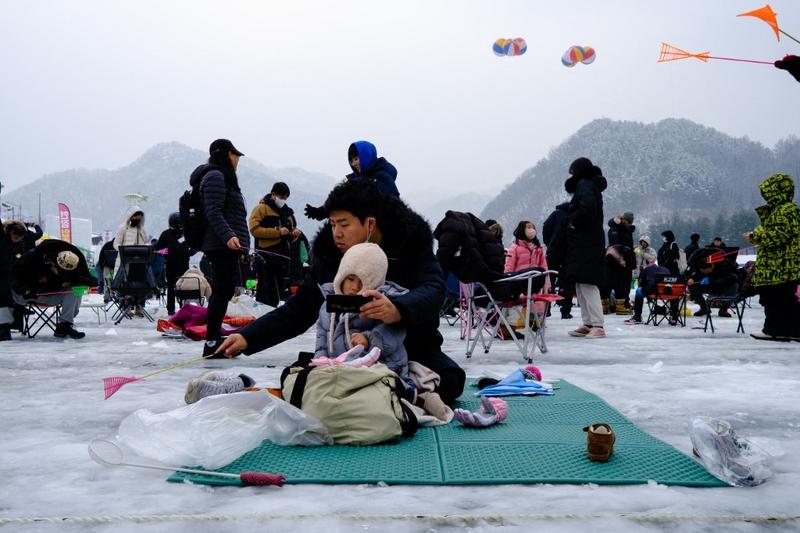 A man holds a phone for his baby as he fishes for trout through a hole on a frozen river during the annual ice fishing festival in Hwacheon, some 120 kilometers northeast of Seoul, on Jan 7, 2023. (PHOTO / AFP)
A man holds a phone for his baby as he fishes for trout through a hole on a frozen river during the annual ice fishing festival in Hwacheon, some 120 kilometers northeast of Seoul, on Jan 7, 2023. (PHOTO / AFP)
SEOUL - Births in South Korea kept falling for the 86th consecutive month in January, fueling concerns about a so-called demographic cliff, statistical office data showed Wednesday.
The number of newborn babies was 23,179 in January, down 6.0 percent from a year earlier, according to Statistics Korea. It marked the lowest January figure since relevant data began to be compiled in 1981.
ALSO READ: S. Korea's childbirth logs lowest November figure
The newborns have been on the decline since December 2015 as more young people delayed or gave up on having children due to economic difficulties such as high housing prices and higher education costs.
The number of marriages increased 21.5 percent over the year to 17,926 in January owing to the lifting of measures against the COVID-19 pandemic
The crude birth rate, which measures the number of babies born to every 1,000 people, reached a new low of 5.3 in January.
The low birth rate boosted worry about the demographic cliff, which refers to a sharp fall in the heads of households eventually leading to a consumption cliff.
ALSO READ: Thailand bids to avert 'population crisis' as birth rate crashes
The number of marriages increased 21.5 percent over the year to 17,926 in January owing to the lifting of measures against the COVID-19 pandemic.
The number of divorces shrank 1.4 percent to 7,251 in the cited month.
The number of deaths was 32,703 in January, up 9.6 percent from a year ago. It marked the highest January reading amid the continued pandemic and the aging population.
READ MORE: Subsidies alone will fail to boost birth rate
Affected by the record deaths and births slide, the country's population kept skidding for the 39th successive month since November 2019.


